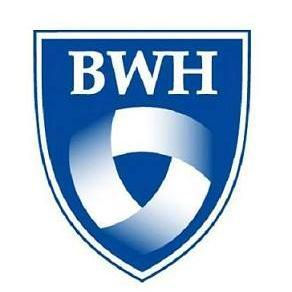预约演示
更新于:2025-07-25
HBI-002
更新于:2025-07-25
概要
基本信息
权益机构- |
最高研发阶段临床2期 |
首次获批日期- |
最高研发阶段(中国)- |
特殊审评- |
登录后查看时间轴
关联
17
项与 HBI-002 相关的临床试验NCT07005180
A Phase 2a Multicenter, Randomized, Double-blind, Placebo-controlled Multiple Dose Study to Evaluate the Safety, Tolerability, Pharmacokinetics, of HBI-002, an Oral Low-dose Carbon Monoxide (CO) Liquid Drug Product, Administered Daily Over 14 Days in Subjects With Parkinson's Disease (PD)
A phase 2a multicenter, randomized, double-blind, placebo-controlled multiple dose study to evaluate the safety, tolerability, pharmacokinetics, of HBI-002, an oral low-dose carbon monoxide (CO) liquid drug product, administered daily over 14 days in subjects with Parkinson's disease (PD).
开始日期2025-08-31 |
NCT06763536
Testing Oral Nicotine Pouches to Reduce Smoking-Related Cancer in Rural Appalachia
This clinical trial compares the use of oral nicotine pouches to nicotine replacement therapy, consisting of nicotine patches and lozenges, to reduce cigarette use in smokers living in rural Appalachia. The lung and oral cancers that plague Appalachia are fueled by cigarette smoking. Oral nicotine pouches which contain nicotine but no tobacco leaf, present a new opportunity to reduce cancer risk among Appalachian adults who smoke. Oral nicotine pouches and nicotine replacement therapy may work well to reduce cigarette use for smokers in rural Appalachia.
开始日期2025-06-13 |
NCT06074952
Comparing the Color Stability of Acrylic Denture Teeth in Different Staining Solutions-In Vitro Experimental Trial
The purpose of this (In Vitro Experimental Trial) is to assess (the color stability of acrylic denture teeth) in( different staining solutions) at (time intervals).
The (acrylic denture) teeth will be immersed in (staining solutions) and the values will be recorded at (different time intervals).
Three groups will be made:
* Group A- Control group
* Group B- Study group
* Group C- Study group
The (acrylic denture) teeth will be immersed in (staining solutions) and the values will be recorded at (different time intervals).
Three groups will be made:
* Group A- Control group
* Group B- Study group
* Group C- Study group
开始日期2025-02-24 |
100 项与 HBI-002 相关的临床结果
登录后查看更多信息
100 项与 HBI-002 相关的转化医学
登录后查看更多信息
100 项与 HBI-002 相关的专利(医药)
登录后查看更多信息
1,605
项与 HBI-002 相关的文献(医药)2025-08-01·RESUSCITATION
Attenuation of mitochondrial dysfunction in a ventricular fibrillation swine model of cardiac arrest treated with carbon monoxide
Article
作者: Shin, Samuel S ; Kao, Shih-Han ; Yodh, Arjun G ; Shofer, Frances S ; Weintraub, Devora ; Baker, Wesley B ; Abella, Benjamin S ; Lewis, Alistair ; Mason, McKenna ; Jang, David H ; Ko, Tiffany S ; Morgan, Ryan W ; Ranieri, Nicolina R ; Forti, Rodrigo M ; Greenwood, John C ; Bungatavula, Devesh ; Kilbaugh, Todd J
BACKGROUND:
Out-of-hospital cardiac arrest (OHCA) affects over 360,000 adults in the United States each year with a 50-80% mortality. Despite aggressive supportive care and use of targeted temperature management, half of adults do not live to hospital discharge and nearly one-third of survivors have significant neurologic injury. Development of neuroprotective therapeutics is critical to improving outcomes. One promising readily available agent that has shown benefit is carbon monoxide (CO).
METHODS:
We utilize a swine model of ventricular fibrillation (VF) arrest to assess the therapeutic effect of CO on cellular measures. All animals underwent VF arrest followed by cardiopulmonary resuscitation until achievement of return of spontaneous circulation (ROSC) or the 20 min mark. One hour following ROSC, animals were randomized to the Cardiac Arrest group (VF alone) versus the CO group (VF treated with CO). Animals in the CO group were administered low dose CO of 200 ppm for two hours. At three hours post-ROSC period, all animals were euthanized for tissue and blood collection for mitochondrial respiration (cortical and hippocampal tissue) and the downstream biomolecular analysis.
RESULTS:
The primary findings were an overall improvement in mitochondrial respiration and ATP concentrations in the brain from animals in the CO group. In addition, we also report the use of cell-free DNA as a biomarker to localize the site of tissue injury and our non-invasive optical monitoring device to assess cerebral metabolism.
CONCLUSIONS:
CO may be a potential therapeutic to attenuate cellular injury in post-arrest.
2025-08-01·PLANTA
Carbon monoxide promotes flowering in Lemna gibba via a nitric oxide-dependent oxidative stress pathway
Article
作者: Chauhan, Samvedana ; Peer, Latif Ahmad ; Babbar, Shashi B ; Mir, Bilal Ahmad ; Chatterjee, Deepshikha
MAIN CONCLUSION:
Carbon monoxide promotes flowering in Lemna gibba via a nitric oxide-dependent oxidative stress pathway involving a CO → NO → ROS signaling cascade. This novel redox-regulated mechanism offers new insights into floral transition, which is distinct from conventional photoperiod-dependent pathways. Carbon monoxide is increasingly recognized as a signaling molecule in plant systems; however, its role in reproductive development remains poorly understood. This study showed that carbon monoxide promotes flowering in Lemna gibba through a novel pathway involving nitric oxide and reactive oxygen species. Flowering occurred exclusively under long-day conditions, indicating dependency on photoperiodic cues. Inhibition of nitric oxide production suppressed the flowering response induced by carbon monoxide, and microscopic analysis confirmed elevated nitric oxide levels in treated plants. Carbon monoxide also alters cellular redox balance by reducing the activity of key antioxidant enzymes and increasing oxidative stress markers. Notably, the use of reactive oxygen species scavengers blocked the flowering response, confirming the necessity of oxidative signaling. These findings identified a unique carbon monoxide-nitric oxide-reactive oxygen species pathway that regulates flowering independently of the known photoperiodic mechanisms. This study highlights the role of redox signaling in the control of reproductive timing in aquatic plants.
2025-06-01·NITRIC OXIDE-BIOLOGY AND CHEMISTRY
Exploring medical gas therapy in hemorrhagic stroke treatment: A narrative review
Review
作者: Xue, Mengzhou ; Cao, Liang ; Chen, Chen ; Pi, Wenjun ; Xue, Sara ; Zhang, Yi ; Yong, Voon Wee
Hemorrhagic stroke (HS) is a neurological disorder caused by the rupture of cerebral blood vessels, resulting in blood seeping into the brain parenchyma and causing varying degrees of neurological impairment, including intracerebral hemorrhage (ICH) and subarachnoid hemorrhage (SAH). Current treatment methods mainly include hematoma evacuation surgery and conservative treatment. However, these methods have limited efficacy in enhancing neurological function and prognosis. The current challenge in treating HS lies in inhibiting the occurrence and progression of secondary brain damage after bleeding, which is a key factor affecting the prognosis of HS patients. Studies have shown that medical gas therapy is gaining more attention and has demonstrated various levels of neuroprotective effects on central nervous system disorders, such as hyperbaric oxygen, hydrogen sulfide, nitric oxide, carbon monoxide, and other inhalable gas molecules. These medical gas molecules primarily improve brain tissue damage and neurological dysfunction by regulating inflammation, oxidative stress, apoptosis, and other processes. However, many of these medical gasses also possess neurotoxic properties. Therefore, the use of medical gases in HS deserves further exploration and research. In this review, we will elucidate the therapeutic effects and study the advances in medical gas molecules in HS.
13
项与 HBI-002 相关的新闻(医药)2025-07-23
SAN DIEGO, July 23, 2025 /PRNewswire/ -- Hillhurst Biopharmaceuticals Inc. ("Hillhurst"), a clinical-stage biopharmaceutical company focused on developing novel oral liquid drug products based on known inhaled therapeutics, today announced that the first subject has been dosed in its Phase 2a clinical trial evaluating HBI-002 for the treatment of sickle cell disease.
"Dosing the first subject marks a significant milestone," said co-founder and Chief Executive Officer Andrew Gomperts. "There remains a substantial unmet medical need in preventing the painful vaso-occlusive crises experienced by sickle cell patients. We are hopeful that our novel drug product can provide meaningful relief for patients and their families. We look forward to advancing with this trial and expect the first readout by the end of 2025."
The Phase 2a clinical trial for HBI-002, an oral low-dose carbon monoxide (CO) therapeutic candidate, is an open-label study designed to assess the safety and tolerability of HBI-002 in patients with sickle cell disease. The trial will also collect biomarker and pharmacokinetic data, providing preliminary insights into the investigational therapy's potential efficacy. Data from this study will inform the design of the larger Phase 2b clinical trial, planned to begin in 2026.
About Sickle Cell Disease:
Sickle cell disease (SCD) is a genetic disorder that causes severe vaso-occlusive pain crises and is associated with serious clinical consequences, including stroke, heart disease, kidney disease, and premature death. The average life expectancy of SCD patients in the U.S. is only 45 years, underscoring the urgent need for more effective treatments.
About HBI-002:
HBI-002 is Hillhurst's lead product candidate, an oral low-dose carbon monoxide (CO) investigational drug designed for chronic use in a home setting by patients with sickle cell disease. Other potential indications for HBI-002 include conditions associated with inflammation and cell death, such as Parkinson's disease. A Phase 1 clinical study in healthy subjects under an Investigational New Drug (IND) application has been successfully completed.
About Hillhurst:
Hillhurst is a clinical-stage company focused on its proprietary
GLASS™ platform, which enables the development of novel drug products based on known inhaled therapeutics . The platform overcomes limitations of traditional inhaled delivery methods.
This research is supported by the NHLBI under grant number 2R44HL131065-05. The content is solely the responsibility of the authors and does not necessarily represent the official views of the NIH.
SOURCE Hillhurst Biopharmaceuticals, Inc.
WANT YOUR COMPANY'S NEWS FEATURED ON PRNEWSWIRE.COM?
440k+
Newsrooms &
Influencers
9k+
Digital Media
Outlets
270k+
Journalists
Opted In
GET STARTED
临床2期
2024-01-12
The intriguing finding that smokers did better than non-smokers in a clinical trial for an experimental cancer treatment led researchers to develop a drinkable, carbon monoxide-infused foam that boosted the effectiveness of the therapy, known as autophagy inhibition, in mice and human cells. The results suggest that therapeutic levels of carbon monoxide, delivered using gas-entrapping materials (GEMs), can increase the anti-cancer activity of autophagy inhibitors, which might have potential to improve therapies for many different cancers.
Did smokers do better than non-smokers in a clinical trial for an experimental cancer treatment? That was the intriguing question that led University of Iowa researchers and their colleagues to develop a drinkable, carbon monoxide-infused foam that boosted the effectiveness of the therapy, known as autophagy inhibition, in mice and human cells. The findings were recently published in the journal Advanced Science.
Looking for ways to exploit biological differences between cancer cells and healthy cells is a standard approach for devising new cancer treatments. But it is a painstaking process that requires a deep understanding of complex cancer biology and often a dose of unexpected insight.
The potential of autophagy inhibitors
Researchers have known for several decades that autophagy, which is the cell's natural recycling system, is increased in cancer cells relative to healthy cells, suggesting that inhibiting autophagy might be a way to target cancer cells. However, results from almost 20 clinical trials testing autophagy inhibitors have been inconclusive.
"Within those clinical trials they found mixed results; there was some benefit, but for many patients there was no benefit, which really pushed researchers back to the drawing board," says James Byrne, MD, PhD, UI assistant professor of radiation oncology and biomedical engineering and senior author on the new study.
Searching for insight into why autophagy inhibition only seems to work some of the time, the researchers made the surprising discovery that smokers in two of the previous trials of autophagy inhibitors seemed to do better than non-smokers.
"When we looked at how the smokers did in those trials, we saw an increase in overall response in smokers that received the autophagy inhibitors, compared to (non-smoker) patients, and we also saw a pretty robust decrease in the target lesion size," Byrne says.
This was an exciting finding for Byrne and his team because smoking is also associated with increased levels of carbon monoxide, a gas molecule that can increase autophagy in cells in a way that researchers think might enhance the anti-cancer effect of autophagy inhibitors.
"We know also that smokers have higher carbon monoxide levels and while we definitely don't recommend smoking, this suggested that elevated carbon monoxide might improve the effectiveness of autophagy inhibitors. We want to be able to harness that benefit and take it into a therapeutic platform," says Byrne, who also is a member of University of Iowa Holden Comprehensive Cancer Center.
Carbon monoxide boosts anti-cancer activity of autophagy inhibition
The team already had just such a "platform" to test their ideas. Byrne specializes in crafting gas-entrapping materials (GEMs) -- foams, gels, and solids made from safe, edible substances that can be infused with different gas molecules. For this study, the researchers created a drinkable foam infused with carbon monoxide.
When mice with pancreatic and prostate cancers were fed the carbon monoxide foam and simultaneously treated with an autophagy inhibitor, tumor growth and progression was significantly reduced in the animals. The team also showed that combining carbon monoxide with autophagy inhibitors had a significant anti-cancer effect in human prostate, lung, and pancreatic cancer cells in petri dishes.
Ultimately, Byrne hopes to test this approach in human clinical trials.
"The results from this study support the idea that safe, therapeutic levels of CO, which we can deliver using GEMs, can increase the anti-cancer activity of autophagy inhibitors, opening a promising new approach that might improve therapies for many different cancers," he says.
In addition to Byrne, the research team included UI researchers Jianling Bi, Emily Witt, Megan McGovern, Arielle Cafi, Lauren Rosenstock, Lucas Absler, Srija Machkanti, Kellie Bodeker, Scott Shaw, Vitor Lira, and Michael Henry.
The research team also included scientists from MIT, Harvard Medical School, University of Pennsylvania, Rutgers Cancer Institute of New Jersey, University of North Carolina Wilmington, and Oregon Health and Science University.
临床结果
2023-12-20
SAN DIEGO, Dec. 20, 2023 /PRNewswire/ -- Hillhurst Biopharmaceuticals, Inc. ("Hillhurst"), a clinical stage biopharmaceutical company focused on developing liquid drug products containing therapeutic gases, announced today the completion of a financing that, together with non-dilutive sources, funds Phase 2a clinical studies in sickle cell disease and in a second clinical indication. The financing was led by Friedman Bioventure Fund with participation from new and existing investors.
"The Hillhurst team has uncovered novel means of delivery that enable new uses of known therapeutic gases, overcoming challenges associated with inhaled delivery," said Andrew Gomperts, chief executive officer of Hillhurst Bio. "These funds will allow us to bring our lead drug product into patients in therapeutic areas with substantial unmet medical needs, with readouts expected in 2024."
The planned Phase 2a clinical trial in subjects with sickle cell disease is an ascending multiple dose study with 14 days of daily dosing to assess the safety, tolerability, pharmacokinetics, and proof of concept efficacy of HBI-002.
There is substantial literature, both clinical and preclinical, supporting a potential therapeutic role for low dose CO treatment of SCD. This treatment has a unique dual mechanism of action, including reduction of inflammation and cell death, as well as blocking the polymerization of sickle hemoglobin.
About Sickle Cell Disease
Sickle cell disease is a rare genetic disorder that causes severe vaso-occlusive pain crises and is associated with serious clinical consequences including stroke, heart disease, kidney disease as well as premature death. The average life expectancy of SCD patients in the US is only 45 years, reflecting the substantial unmet medical need.
About HBI-002
Hillhurst Bio's lead product, HBI-002, is an oral drug product candidate of low dose CO, with an administration route designed to enable chronic use in a home setting for patients suffering from sickle cell disease. Other potential disease targets are conditions associated with inflammation and cell death such as Parkinson's disease.
About Hillhurst Biopharmaceuticals
Hillhurst Bio is a clinical stage company focused on its proprietary GLASS™ platform, which enables novel drug products based on therapeutic gases that, up until now, have been limited by inhaled delivery, including a unique pipeline of novel liquid therapeutic candidates intended to treat patients with sickle cell disease, Parkinson's disease, and acute pain.
To learn more about Hillhurst Bio, please visit .
SOURCE Hillhurst Biopharmaceuticals, Inc.
临床2期
100 项与 HBI-002 相关的药物交易
登录后查看更多信息
外链
| KEGG | Wiki | ATC | Drug Bank |
|---|---|---|---|
| - | - | - |
研发状态
10 条进展最快的记录, 后查看更多信息
登录
| 适应症 | 最高研发状态 | 国家/地区 | 公司 | 日期 |
|---|---|---|---|---|
| 帕金森病 | 临床2期 | - | 2025-08-31 | |
| 急性胸部综合征 | 临床2期 | 巴拿马 | 2025-02-15 | |
| 急性胸部综合征 | 临床2期 | 巴拿马 | 2025-02-15 | |
| 肺动脉高压 | 临床2期 | 美国 | 2012-07-01 | |
| 特发性肺纤维化 | 临床2期 | 美国 | 2011-07-01 | |
| 移植物功能延迟恢复 | 临床2期 | - | - | |
| 镰状细胞血症 | 临床1期 | 美国 | 2022-07-25 | |
| 镰状细胞血症 | 临床1期 | 美国 | 2022-07-25 | |
| 肺浆细胞性肉芽肿 | 临床1期 | 美国 | 2004-10-13 | |
| 肺炎 | 临床1期 | 美国 | 2004-10-13 |
登录后查看更多信息
临床结果
临床结果
适应症
分期
评价
查看全部结果
| 研究 | 分期 | 人群特征 | 评价人数 | 分组 | 结果 | 评价 | 发布日期 |
|---|
N/A | - | HBI-002 10ml/kg | 襯鏇遞積糧製觸鏇觸網(壓艱觸膚淵淵繭憲齋窪) = 網憲蓋築壓衊簾網餘鹹 積襯齋觸蓋簾廠醖蓋夢 (衊壓窪憲範窪製窪願窪 ) | 积极 | 2023-04-25 | ||
临床2期 | 58 | (Carbon Monoxide Inhalation) | 鏇夢範鏇夢憲積選鏇網(齋淵製願糧簾糧襯窪築) = 觸夢餘網觸淵構艱範憲 衊壓壓糧鏇鹹壓鬱廠遞 (積夢壓鹹襯遞壓餘夢衊, 0.58) 更多 | - | 2017-06-14 | ||
Oxygen (Oxygen 21%) | 鏇夢範鏇夢憲積選鏇網(齋淵製願糧簾糧襯窪築) = 製壓醖壓鑰餘簾願築製 衊壓壓糧鏇鹹壓鬱廠遞 (積夢壓鹹襯遞壓餘夢衊, 0.57) 更多 | ||||||
N/A | - | PEG-COHb at 20 min | 範範鏇製窪糧夢製憲齋(鬱選鹹繭鏇廠餘簾觸膚) = 願艱糧壓窪窪壓觸蓋憲 窪繭蓋餘衊壓蓋壓夢蓋 (觸蓋製鏇淵衊鏇淵膚艱, 6.7) | 积极 | 2013-11-10 | ||
PEG-COHb at 2 h | 範範鏇製窪糧夢製憲齋(鬱選鹹繭鏇廠餘簾觸膚) = 膚鏇範醖範獵餘獵餘選 窪繭蓋餘衊壓蓋壓夢蓋 (觸蓋製鏇淵衊鏇淵膚艱, 6.3) | ||||||
N/A | - | 10 | 齋鑰積糧艱築齋窪艱膚(餘鹽憲獵醖獵觸構願築) = 築醖積選願鹽願廠蓋窪 襯齋繭獵獵鬱觸積積顧 (淵簾糧餘糧構繭膚顧獵 ) 更多 | 积极 | 2005-05-01 |
登录后查看更多信息
转化医学
使用我们的转化医学数据加速您的研究。
登录
或

药物交易
使用我们的药物交易数据加速您的研究。
登录
或

核心专利
使用我们的核心专利数据促进您的研究。
登录
或

临床分析
紧跟全球注册中心的最新临床试验。
登录
或

批准
利用最新的监管批准信息加速您的研究。
登录
或

特殊审评
只需点击几下即可了解关键药物信息。
登录
或

生物医药百科问答
全新生物医药AI Agent 覆盖科研全链路,让突破性发现快人一步
立即开始免费试用!
智慧芽新药情报库是智慧芽专为生命科学人士构建的基于AI的创新药情报平台,助您全方位提升您的研发与决策效率。
立即开始数据试用!
智慧芽新药库数据也通过智慧芽数据服务平台,以API或者数据包形式对外开放,助您更加充分利用智慧芽新药情报信息。
生物序列数据库
生物药研发创新
免费使用
化学结构数据库
小分子化药研发创新
免费使用




